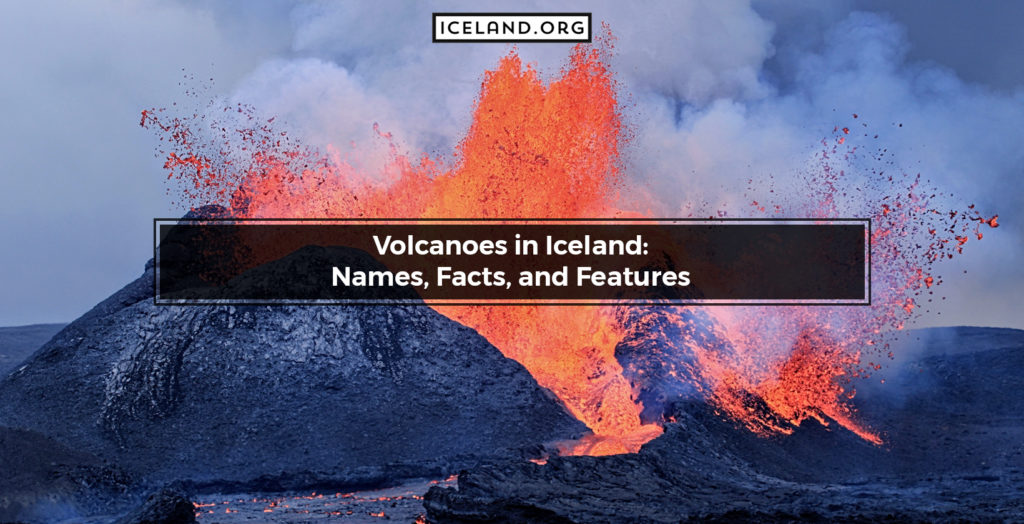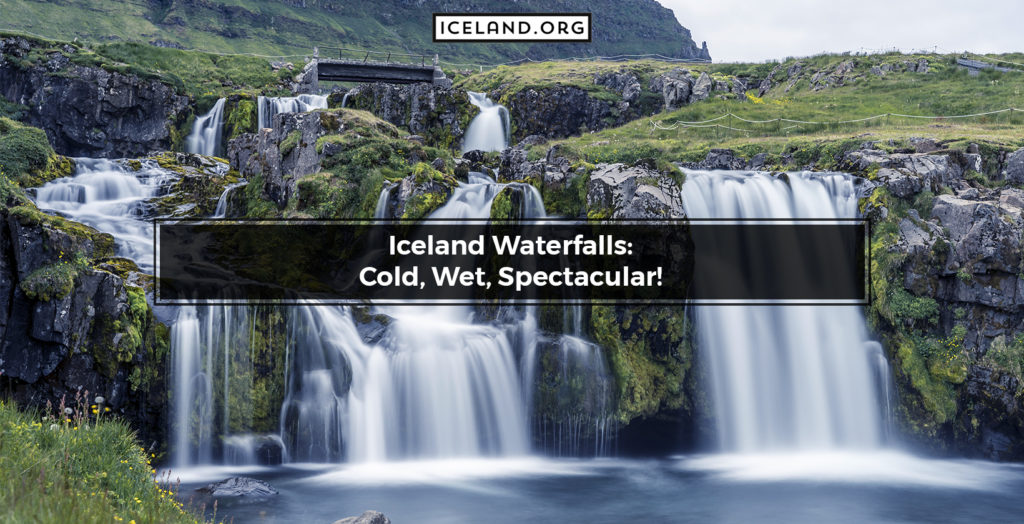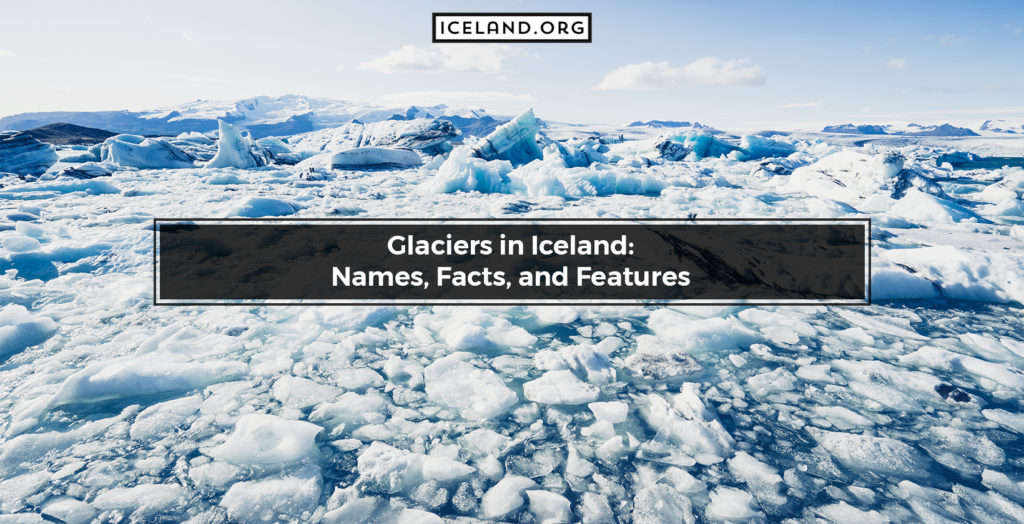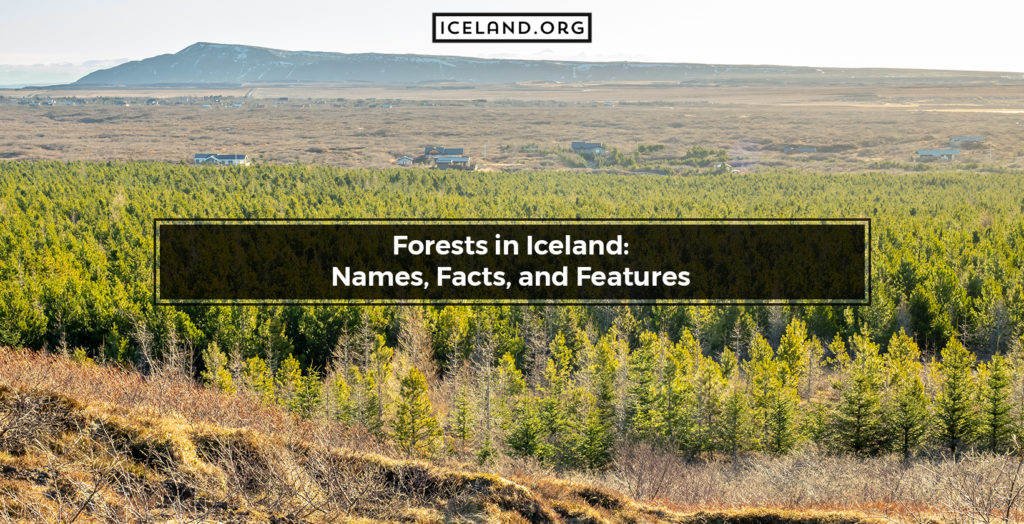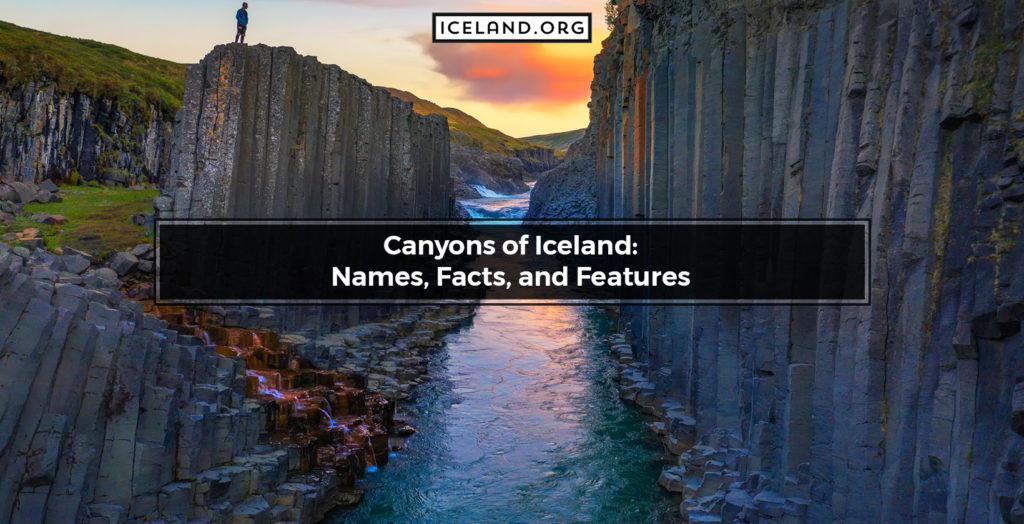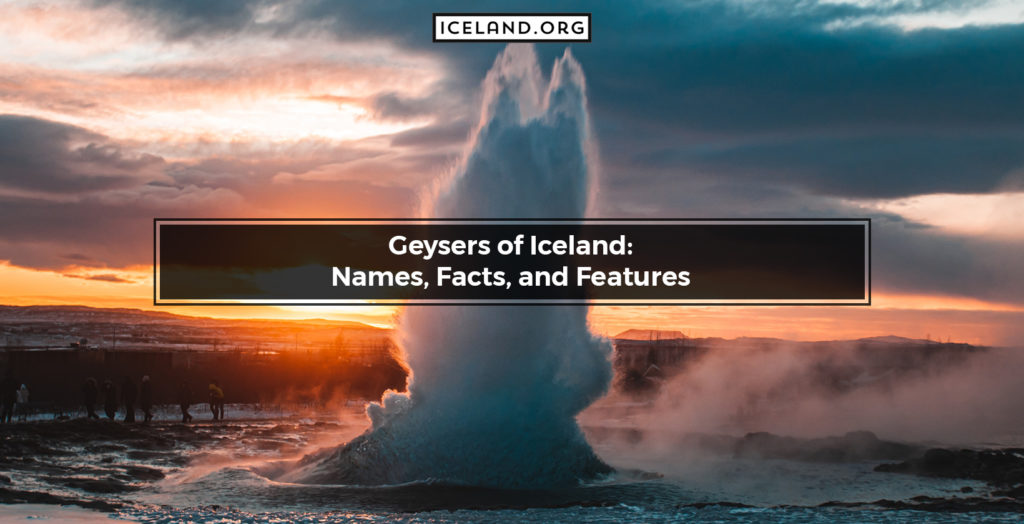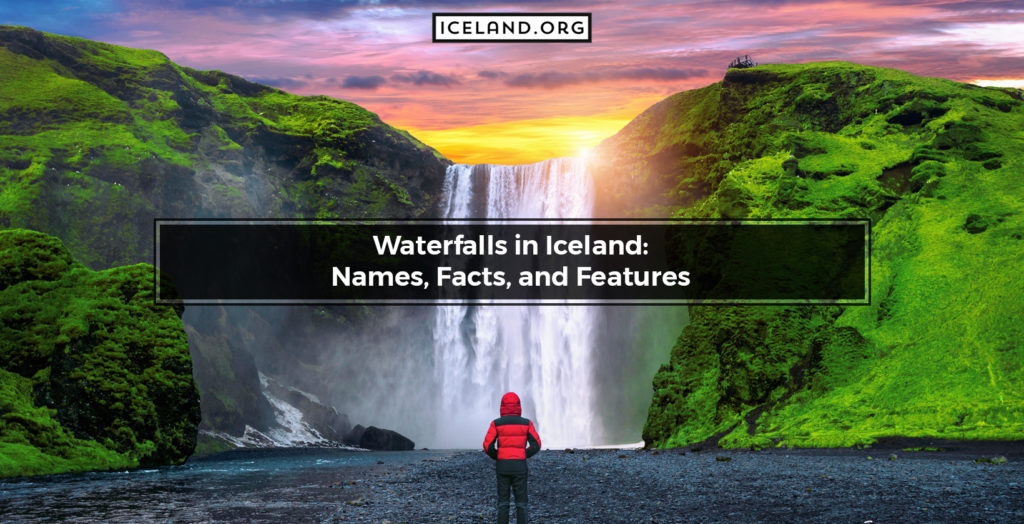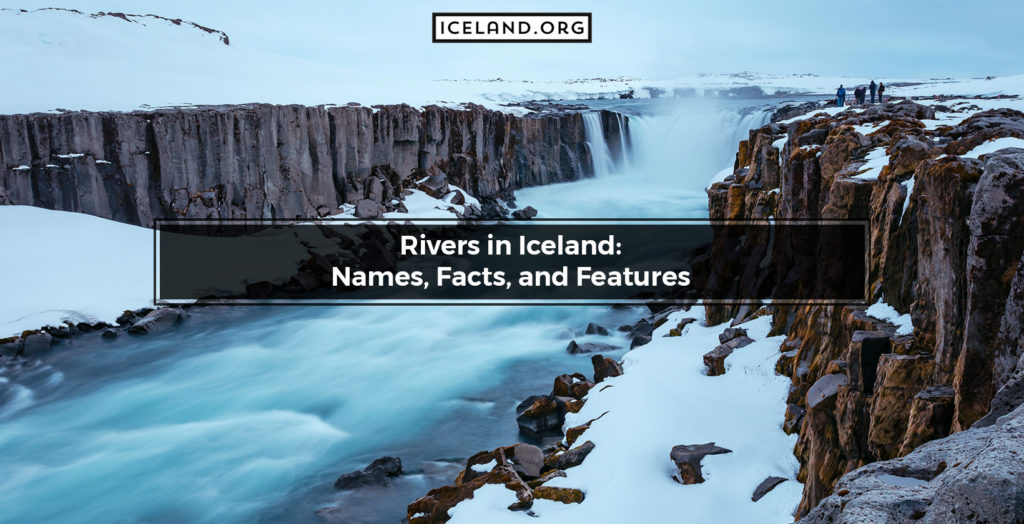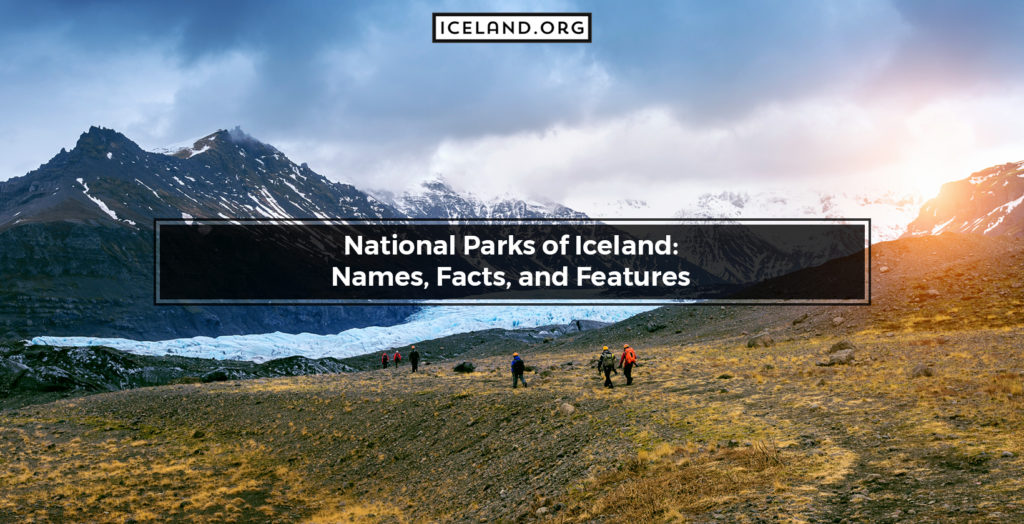Volcanoes are one of the main geographic features of Iceland. It is considered that Iceland is the home to one-third of the lava that ever flowed on Earth. As much as 25% of the Iceland surface is covered with volcanoes. Today, the country has 32 volcanic systems comprising 130 different volcanic mountains.
In terms of activity, some are still active, and others are considered extinct. In contrast, in terms of structure, some are stratovolcanoes (mountainous with cone-shaped peaks), others are covered with glaciers, and there are those with flat tops and steep sides (tuyas).
Öræfajökull is the largest active volcano in iceland and also the home of the highest peak (2119 meters). However, because of their frequent activity, the most well-known volcanoes are Hekla, with 18 eruptions in recent history, and Katla, with 20 eruptions since the settlement of Iceland.
Here is a list of the volcanoes in Iceland:
- Askja (1516 meters)
- Bárðarbunga (2005 meters)
- Brennisteinsfjöll (626 meters)
- Eldfell (279 meters)
- Eldgjá (800 meters)
- Esjufjöll (1760 meters)
- Eyjafjallajökull (1666 meters)
- Fagradalsfjall (385 meters)
- Fremrinámur (939 meters)
- Grensdalur (497 meters)
- Grímsnes (214 meters)
- Grímsvötn (1725 meters)
- Hekla (1491 meters)
- Helgafell (73 meters)
- Hengill (803 meters)
- Herðubreið (1682 meters)
- Hofsjökull (1782 meters)
- Holuhraun (778 meters)
- Hrómundartindur (561 meters)
- Hveravellir (1360 meters)
- Hverfjall (420 meters)
- Jólnir (64 meters)
- Katla (1512 meters)
- Kerlingarfjöll (1488 meters)
- Kolbeinsey Ridge (8 meters)
- Kollóttadyngja (1177 meters)
- Krafla (650 meters)
- Krakatindur (300 meters)
- Krýsuvík (379 meters)
- Kverkfjöll (1764 meters)
- Laki (1725 meters)
- Loki-Fögrufjöll (1570 meters)
- Ljósufjöll (988 meters)
- Lýsuhóll (+540 meters)
- Öræfajökull (2119 meters)
- Prestahnúkur (1220 meters)
- Reykjanes (230 meters)
- Reykjaneshryggur (80 meters)
- Snæfellsjökull (1448 meters)
- Surtsey (155 meters)
- Theistareykjarbunga (540 meters)
- Thórðarhyrna (1660 meters)
- Thórólfsfell (574 meters)
- Thríhnákagígur (550 meters)
- Tindfjallajökull (1463 meters)
- Torfajökull (1280 meters)
- Trölladyngja (1468 meters)
- Tungnafellsjökull (1535 meters)
- Vatnafjöll (1235 meters).
1. Askja
Askja Volcano in Iceland is located in the central parts of the country. The Askja Volcano’s coordinates are 65.0111° N, 16.7485° W. Tours and Tour Guides for the Askja Volcano in Iceland are available. The Askja Volcano is active. It has erupted several times throughout history, and its last eruption occurred in 1961. Interestingly, the Askja volcano was not of particular interest until March 29, 1875, when its eruption resulted in ash and tephra polluting the air all the way to Middle Europe. After the eruption, a smaller caldera formed, and it was filled with water forming the Öskjuvatn lake, which is 220 meters deep today is the second deepest lake in the country. The lake raised interest in scientific circles, and in 1907 two German scientists disappeared while exploring the Öskjuvatn lake in a small boat. Today, the Askja Volcano area is used for training NASA astronauts.
2. Bárðarbunga
Bárðarbunga Volcano in Iceland is located in the southeast. The Bárðarbunga Volcano’s coordinates are 64.6410° N, 17.5280° W. Bárðarbunga is a stratovolcano and a part of a 200 kilometers long and 25 kilometers wide volcanic system. Tours and Tour Guides for the Bárðarbunga Volcano in Iceland are available. The Bárðarbunga Volcano is active. Many eruptions mark the active history of the Bárðarbunga Volcano, with the last one occurring between 2014 and 2015. The eruption was announced by over 1600 earthquakes which took place 48 hours before Bárðarbunga erupted and created a fissure between the Bárðarbunga and Askja Volcano through the Holuhraun lava field.
3. Brennisteinsfjöll
Brennisteinsfjöll Volcano (Sulfur Mountains) in Iceland is located in the southwestern parts of the country. The Brennisteinsfjöll Volcano’s coordinates are 63.9233° N, 21.8128° W. Brennisteinsfjöll is a small volcanic system with shield volcanoes and crater rows. The system is 45 kilometers long, 10 kilometers wide, and covers an area of 280 square kilometers. Tours and Tour Guides for the Brennisteinsfjöll Volcano in Iceland are available. The Brennisteinsfjöll Volcano is not active. However, in the past, the Brennisteinsfjöll Volcano was quite active and had between 30 and 40 eruptions during the Holocene and ten since Iceland’s settlement. The Brennisteinsfjöll Volcano’s last eruption occurred in 1341.
4. Eldfell
Eldfell Volcano (Hill of Fire) in Iceland is located on an island off the south coast. The Eldfell Volcano’s coordinates are 63.4321° N, 20.2494° W. The volcanic cone formed on 23 January 1973 during an unexpected eruption that caused havoc in the air travel and resulted in the complete evacuation of the Heimaey island. The heat from the lava was used to make hot water and generate electricity. The 5-months long eruption added land to the Heimaey island, making it bigger than it was for around 20%. Tours and Tour Guides for the Eldfell Volcano are available. The Eldfell Volcano is active.
5. Eldgjá
Eldgjá Volcano (Fire Canyon) in Iceland is located in the south. The Eldgjá Volcano’s coordinates are 63.9664° N, 18.6082° W. Eldgjá is 40 kilometers long and the largest volcanic canyon in the world. It was discovered in 1893 by Þorvaldur Thoroddsen. Within the volcanic canyon, there is a stunning waterfall called Ófærufoss. Tours and Tour Guides for the Eldgjá Volcano in Iceland are available. The Eldgjá Volcano is not active. The last eruption of the Eldgjá Volcano was in 939.
6. Esjufjöll
Esjufjöll Volcano in Iceland is located in the southeast of the country. The Esjufjöll Volcano’s coordinates are 64.2700° N, 16.6500° W. The Esjufjöll Volcano is a subglacial volcano with an ice-filled caldera of 40 square kilometers. The Esjufjöll Volcano is part of Iceland’s Oræfi Volcanic Belt and is considered to be a strict nature reserve. Tours and Tour Guides for the Esjufjöll Volcano in Iceland are available. The Esjufjöll is not active. The last eruption of the Esjufjöll Volcano occurred in 1927. In 2002 and 2010, there were earthquake swarms indicating the magma within the Esjufjöll Volcano might be moving.
7. Eyjafjallajökull
Eyjafjallajökull Volcano (Ice Cap) in Iceland is located in the southwest of the country. The Eyjafjallajökull Volcano’s coordinates are 63.6314° N, 19.6083° W. Eyjafjallajökull is completely covered with ice which feeds many outlet glaciers, including Gígjökull and Steinholtsjökull. The crater has two main peaks named Guðnasteinn (1.500 meters), Hámundur (1.651 meters), and Goðasteinn (1.497 m). The southern face of the mountain is rich in waterfalls, with Skógafoss being the most famous one. Tours and Tour Guides for the Eyjafjallajökull Volcano in Iceland are available. The Eyjafjallajökull is active. The last eruption of the Eyjafjallajökull Volcano was on April 14, 2010. Although small, the eruption caused an enormous mess in the air travel, which lasted for a week.
8. Fagradalsfjall
Fagradalsfjall Volcano in Iceland is located in the southwest of the country. The Fagradalsfjall Volcano’s coordinates are 63.8933° N, 22.2697° W. Fagradalsfjall is a 40 kilometers long tuya volcano that formed during the Last Glacial Period. Tours and Tour Guides for the Fagradalsfjall Volcano in Iceland are available. The Fagradalsfjall is active. To be more precise, the Fagradalsfjall Volcano was quiet for 800 years, and then it suddenly erupted on March 19, 2021. The effusive eruption emitted its last fresh lava a few months later, on September 18, 2021. The unique nature of the eruption changes Fagradalsfjall, transforming it into a shield volcano.
9. Fremrinámur
Fremrinámur Volcano in Iceland is located in the southeast. The Fremrinámur Volcano’s coordinates are 65.4297° N, 16.6500° W. The Fremrinámur Volcano is set on a basalt plateau and marks the junction point between the Mid-Atlantic Ridge and the Greenland–Iceland–Faroe Ridge. Tours and Tour Guides for the Fremrinámur Volcano are available. The Fremrinámur Volcano is not active. Its last eruption occurred in 800 BC.
10. Grensdalur
Grensdalur Volcano in Iceland is located in the southwest. The Grensdalur Volcano’s coordinates are 64.0458° N, 21.1918° W. Grensdalur is the oldest volcanic system in the Hengill area. The Grensdalur system features many hot springs, pools, fumaroles, geysers, and mud pots and generates heat for the Hveragerdi town. Tours and Tour Guides for the Grensdalur Volcano in Iceland are available. The Grensdalur Volcano is not active. The last eruption of the Grensdalur Volcano occurred more than 2000 years ago.
11. Grímsnes
Grímsnes Volcano in Iceland is located in the south. The Grímsnes Volcano’s coordinates are 64.0333° N, 20.8667° W. The Grímsnes Volcano is a volcanic system made of individual crater volcanoes. The most important individual volcano is the lake-filled Kerið. The lava field surrounding Grímsnes is called Grímsneshraun and covers an area of 54 square kilometers. Tours and Tour Guides for the Grímsnes Volcano in Iceland are available. The Grímsnes Volcano is not active. The activity of the Grímsnes Volcano was restricted to a short time frame between 6500 and 5500 years ago.
12. Grímsvötn
Grímsvötn Volcano in Iceland is located in the southeast. The Grímsvötn Volcano’s coordinates are 64.4167° N, 17.3222° W. Grímsvötn is an entirely subglacial basaltic volcano. Interestingly, in 2004 scientists discovered bacteria in the never-freezing Grímsvötn lake under the Grímsvötn glacier. This was the first proof that life existed in such low-oxygen and Mars-like conditions. Tours and Tour Guides for the Grímsvötn Volcano in Iceland are available. The Grímsvötn volcano is active. The last eruption of the Grímsvötn volcano occurred on May 24, 2011. Later, in 2020-2021 there were threats, but they did not culminate in an eruption.
13. Hekla
Hekla Volcano in Iceland is located in the south of the country. The Hekla Volcano’s coordinates are 63.9923° N, 19.6658° W. Hekla is a stratovolcano and part of a 40-kilometers long volcanic ridge. Tours and Tour Guides for the Hekla Volcano in Iceland are available. The Hekla volcano is active. In fact, Hekla is one of the most active volcanoes in Iceland (it has produced the largest volume of lava in the world and about 10% of Iceland’s tephra). Hekla’s last eruption was on February 16, 2000. Hekla is important for Icelandic culture as it is believed that the gates of Hell are located at its bottom (in the middle ages, Europeans called Hekla the “Gateway to Hell”).
14. Helgafell
Helgafell Volcano (Holy Mountain) in Iceland is located in the west. The Helgafell Volcano’s coordinates are 65.0426° N, 22.7279° W. Helgafell is a small mountain-type of a volcano with a temple in the hour of Thor (built by the first settler of the area named Þórólfr Mostrarskegg). Tours and Tour Guides for the Helgafell Volcano in Iceland are available. The Helgafell Volcano is not active, and its last eruption likely occurred thousands of years ago. The Helgafell Volcano is mentioned in the Laxdæla saga (the location where the heroine Guðrún Ósvífrsdóttir lived and was buried).
15. Hengill
Hengill Volcano in Iceland is located in the southwest of the country. The Hengill Volcano’s coordinates are 64.1833° N, 21.3333° W. Covering an area of 100 square kilometers; the Hengill Volcano is well-known for its hot springs and fumaroles. Tours and Tour Guides for the Hengill Volcano in Iceland are available. The Hengill Volcano is active despite the fact that it has not erupted for more than two thousand years. Two power stations named Nesjavellir and Hellisheiði use heat from the Hengill Volcano to make energy. The Hengill Volcano is popular in Icelandic folk tales. Based on the tales, a sleeping troll woman called Jóra lived underneath the volcano and prayed on wanderers or horsemen passing the trail over Dyrafjöll.
16. Herðubreið
Herðubreið Volcano (Broad-Shouldered) in Iceland is located in the east. The Herðubreið Volcano’s coordinates are 65.1726° N, 16.3167° W. Herðubreið is a tuya type of volcano or flat-topped table mountain. Herðubreið developed under the heavy ice sheet that covered Iceland territory during the Last Glacial Period. Tours and Tour Guides for the Herðubreið Volcano in Iceland are available. The Herðubreið Volcano is not active. Its last eruption occurred sometime during the Pleistocene.
17. Hofsjökull
Hofsjökull volcano is located in the southwest of the island. The Hofsjökull Volcano’s coordinates are 64.8167° N, 18.8167° W. Hofsjökull is one of the largest active volcanoes in Iceland and third largest ice cap in the country. Tours and Tour Guides for the Hofsjökull Volcano in Iceland are available. The Hofsjökull Volcano is active. The main crater of the Hofsjökull crater has not erupted for more than 12.000 years, but there have been small basaltic lava flows from the flank fissures.
18. Holuhraun
Holuhraun Volcano in Iceland is located in the central parts of the island. The Holuhraun Volcano’s coordinates are 64.8500° N, 16.8300° W. Holuhraun is a large lava field (covering an area of 85 square kilometers with a lava volume of 1.6 cubic meters) that was discovered in 1880 and developed as a result of repetitive fissure eruptions. Tours and Tour Guides for the Holuhraun Volcano are available. The Holuhraun Volcano is active. The last activity of the Holuhraun began on August 29, 2014, and ended on February 27, 2015.
19. Hrómundartindur
Hrómundartindur Volcano in Iceland is located in the southwestern parts of the island. The Hrómundartindur Volcano’s coordinates are 64.0769° N, 21.1997° W. Hrómundartindur is a stratovolcano that forms a 25 kilometers long volcanic system. Tours and Tour Guides for the Hrómundartindur Volcano in Iceland are available. The Hrómundartindur Volcano is not active. The last eruption of the Hrómundartindur Volcano occurred around 11.000 years ago and resulted in a lava field of around 4 square kilometers.
20. Hveravellir
Hveravellir Volcano in Iceland is located in the central parts of the country. The Hveravellir Volcano’s coordinates are 64.8672° N, 19.5456° W. Hveravellir is part of the so-called Oddnýjarhnjúkur-Langjökull volcanic system. The Hveravellir geothermal field covers an area of 2.5 square kilometers and is filled with fumaroles, hot springs, and mud pools. Tours and Tour Guides for the Hveravellir Volcano in Iceland are available. The Hveravellir Volcano is not active. The last eruption of the Hveravellir Volcano was in 950, and it was marked by one of the small shield volcanoes blowing up.
21. Hverfjall
Hverfjall Volcano in Iceland is located in the north. The Hverfjall Volcano’s coordinates are 65.6086° N, 16.8717° W. Hverfjall is classified as a tuff ring tephra cone volcano featuring a crater that is one kilometer in diameter. Tours and Tour Guides for the Hverfjall Volcano in Iceland are available. There are only two safe and allowed routes for accessing the crater’s rim. The Hverfjall Volcano is not active. Its last eruption occurred in 2500 BC.
22. Jólnir
Jólnir Volcano in Iceland was located on an island off the south coast. The Jólnir Volcano’s coordinates are 63.2947° N, 20.6328° W. Jólnir is a former vent of Surtsey Volcano (together with Syrtlingur and Surtla). It emerged from under the ocean when the active tectonic plates moved sometime between 1965 and 1966. Tours and Tour Guides for the Jólnir Volcano are not available. The Jólnir Volcano is not active, and today it is below the Atlantic Ocean’s surface. The last eruption occurred in 1966, and after that, the robust waves of the Atlantic Ocean sank the island.
23. Katla
Katla Volcano in Iceland is located in the south. The Katla Volcano’s coordinates are 63.6467° N, 19.1303° W. Katla is one of the most active volcanoes in Iceland. It covers an area of 595 square kilometers, and part of it is covered with the Mýrdalsjökull glacier. The Katla’s caldera has a diameter of 10 kilometers and is covered with a thick ice layer (200-700 meters). Tours and Tour Guides for the Katla Volcano in Iceland are available. The Katla volcano is active. The last eruption of Katla occurred on October 2, 1918. Since then, there have been several smaller subglacial eruptions as well as periods of increased seismic and geothermal activity. Katla is the largest source of volcanic carbon dioxide in the world, with emissions accounting for up to 4%.
24. Kerlingarfjöll
Kerlingarfjöll Volcano in Iceland is located in the central parts of the country. The Kerlingarfjöll Volcano’s coordinates are 64.6366° N, 19.2694° W. Kerlingarfjöll is a large tuya volcano that covers an area of 100 square kilometers. Kerlingarfjöll is made of red volcanic rhyolite stones and features many hot springs that make the ground flamboyant and covered with red, green, and yellow patches. Since March 17, 2017, Kerlingarfjöll and its surrounding geothermal area have been a nature reserve protected by the State of Iceland. Tours and Tour Guides for the Kerlingarfjöll Volcano in Iceland are available. The Kerlingarfjöll Volcano is not active.
25. Kolbeinsey Ridge
Kolbeinsey Ridge in Iceland is located on an islet off the north coast. The Kolbeinsey Ridge’s coordinates are 67.1505° N, 18.6836° W. The Kolbeinsey Ridge includes two small volcanic islands called Kolbeinsey and Grímsey. Tours and Tour Guides for the Kolbeinsey Ridge in Iceland are not available. The Kolbeinsey Ridge is active. The last eruption of the Kolbeinsey Ridge occurred underwater in 1372.
26. Kollóttadyngja
Kollóttadyngja Volcano in Iceland is located in the central-eastern parts of the island. The Kollóttadyngja Volcano’s coordinates are 65.2194° N, 16.5475° W. Kollóttadyngja is a large shield volcano with a 6-7 kilometers long diameter and part of the Ódáðahraun lava-field. Tours and Tour Guides for the Kollóttadyngja Volcano in Iceland are available. The Kollóttadyngja Volcano is active.
27. Krafla
Krafla Volcano in Iceland is located in the north. The Krafla Volcano’s coordinates are 65.7171° N, 16.7544° W. Krafla is a 90 kilometers long fissure caldera with a 10-kilometers diameter. Krafla is set atop the Mid-Atlantic Ridge, thus representing a hotspot. Krafla houses the crater Viti. Viti means hell in Icelandic, and there are only two such craters in Iceland, one on Krafla and the other one on Askja. Tours and Tour Guides for the Krafla Volcano in Iceland are available. The Krafla volcano is active. There are 29 reported eruptions of the Krafla Volcano in recorded history, including the so-called Mývatn fires, which occurred between 1724 and 1729 when many fissures intermittently opened.
28. Krakatindur
Krakatindur Volcano in Iceland is located in the southwest. The Krakatindur Volcano’s coordinates are 64.0131° N, 19.4717° W. Krakatindur is part of the Hekla volcanic system and is set on the Nyjahraun lava field. Tours and Tour Guides for the Krakatindur Volcano in Iceland are available. The unique landform of the Krakatindur Volcano and its surroundings are best witnessed by air. The Krakatindur Volcano is not active.
29. Krýsuvík
Krýsuvík Volcano in Iceland is located in the southwest. The Krýsuvík Volcano’s coordinates are 63.8957° N, 22.0524° W. Krýsuvík is a volcanic system with no central volcano and covers an area of 350 square kilometers. The system is 55 kilometers long and 13 kilometers wide. Tours and Tour Guides for the Krýsuvík Volcano in Iceland are available. The Krýsuvík Volcano is active and prone to effusive basaltic fissure eruptions. The last eruption of the Krýsuvík Volcano occurred in 2021. Over its history, the eruptions of Krýsuvík formed several lava fields, including Búrfellshraun, Óbrinnishólabruni, and Kapelluhraun.
30. Kverkfjöll
Kverkfjöll Volcano in Iceland is located in the southeast. The Kverkfjöll Volcano’s coordinates are 64.6500° N, 16.7000° W. The hot magma chamber under Kverkfjöll leads to several subglacial caves. Tours and Tour Guides for the Kverkfjöll Volcano in Iceland are available. The Kverkfjöll Volcano is active. The last confirmed eruption of Kverkfjöll occurred over 1300 years ago, but local earthquakes indicate the volcano is not passive. Plus, there are suspicions about recent subglacial eruptions causing glacier runs.
31. Laki
Laki Volcano in Iceland is located in the south. The Laki Volcano’s coordinates are 64.0707° N, 18.2378° W. Laki is a volcanic fissure and part of a volcanic system that includes the Grímsvötn Volcano and the Thordarhyrna Volcano. Tours and Tour Guides for the Laki Volcano in Iceland are available. The Laki Volcano is active. Its last eruption was violent and long, lasting from June 1783 to February 1784. The aftermath of the eruption included poisonous clouds, severe soil contamination, crop destruction, and livestock deaths. It also triggered a significant drop in global temperatures and one of the worst famines in Iceland’s history, with nearly 69% of the population dying.
32. Loki-Fögrufjöll
Loki-Fögrufjöll Volcano (also known as Hamarinn and Lokahryggur) in Iceland is located in the central part of the island. The Loki-Fögrufjöll Volcano’s coordinates are 64.5876° N, 17.7997° W. Loki-Fögrufjöll is a subglacial volcano under the Vatnajökull glacier. Loki-Fögrufjöll is an independent volcano but part of the Bárðarbunga fissure system. Tours and Tour Guides for the Loki-Fögrufjöll Volcano in Iceland are available. The Loki-Fögrufjöll Volcano is active. The last eruption of Loki-Fögrufjöll occurred in 1910 and was marked by a significant tephra release. However, there are suspicions about subglacial eruptions in 1986, 1991, 2006, 2008, and 2011.
33. Ljósufjöll
Ljósufjöll Volcano (Mountains of the Light) in Iceland is located in the west. The Ljósufjöll Volcano’s coordinates are 64.9178° N, 22.5675° W. The Ljósufjöll Volcano is a 90-kilometers long fissure vent system with cinder cones and a central volcano. Tours and Tour Guides for the Ljósufjöll Volcano in Iceland are available. The Ljósufjöll is not active (last eruption in 1148). The only Ljósufjöll eruption in recorded history was in 1148, and it took the lives of over 80 people, including Magnús Einarsson, the bishop of Skálholt.
34. Lýsuhóll
Lýsuhóll Volcano in Iceland is located in the west. The Lýsuhóll Volcano’s coordinates are 64.8394° N, 23.2226° W. Lýsuhóll is the smallest volcano in Iceland, and it consists of pyroclastic cones. Tours and Tour Guides for the Lýsuhóll Volcano in Iceland are available. The Lýsuhóll Volcano is not active, and it has not erupted during recorded historical times.
35. Öræfajökull
Öræfajökull Volcano in Iceland is located in the southeast. The Öræfajökull Volcano’s coordinates are 63.9822° N, 16.6536° W. Öræfajökull is the largest active volcano and is covered with part of the Vatnajökull glacier. Öræfajökull houses the 2110-meters high Hvannadalshnúkur, which is the highest peak in Iceland. Tours and Tour Guides for the Öræfajökull Volcano are available. The Öræfajökull is active. In recent times, the Öræfajökull Volcano has erupted twice, first in 1362 and then in 1728. The 1362 eruption was catastrophic, with damages that made the area inhabitable for almost 40 years. In fact, Öræfajökull got this name after the eruption from the word Öræfi which in Icelandic means “an area with no harbor” or wasteland. In 2017 it showed increased seismic and geothermal activity, but they did not result in an eruption.
36. Prestahnúkur
Prestahnúkur Volcano in Iceland is located in the west. The Prestahnúkur Volcano’s coordinates are 64.5862° N, 20.6722° W. Prestahnúkur is a central rhyolitic volcano with a small magma chamber and volcanic fissures spreading under nearby glaciers such as Þórisjökull, Geitlandsjökull, and Langjökull. Tours and Tour Guides for the Prestahnúkur Volcano are available. The Prestahnúkur Volcano is active. The last eruption of the Prestahnúkur Volcano was 3350 BC.
37. Reykjanes
Reykjanes volcano in Iceland is located in the southwest of the island. The Reykjanes Volcano’s coordinates are 63.9155° N, 22.3650° W. Reykjanes is a volcanic system made from several small shield systems just over the line where the Mid-Atlantic Ridge rises above sea level. The Reykjanes Volcanoes are covered with lava fields. Tours and Tour Guides for the Reykjanes Volcano are available. The Reykjanes Volcano is active. The last eruption of Reykjanes started on March 18, 2021, and is ongoing. Lasting for more than 180 days, this is the longest volcanic eruption in Iceland’s recent history.
38. Reykjaneshryggur
Reykjaneshryggur Volcano in Iceland is a submarine volcano located off the southwestern coast. The Reykjaneshryggur Volcano’s coordinates are 63.67° N, 23.33° W. Reykjaneshryggur is the last volcano of the Mid Atlantic Ridge. Tours and Tour Guides for the Reykjaneshryggur Volcano in Iceland are not available. The Reykjaneshryggur Volcano is active. The last eruption occurred in 1970.
39. Snæfellsjökull
Snæfellsjökull Volcano in Iceland is located in the west. The Snæfellsjökull Volcano’s coordinates are 64.8057° N, 23.7731° W. Snæfellsjökull is a 700.000 years old, glacier-capped stratovolcano and part of the Snæfellsjökull National Park. Tours and Tour Guides for the Snæfellsjökull Volcano in Iceland are available. The Snæfellsjökull is not active, and its last eruption occurred in 200 BC. The Snæfellsjökull Volcano was mentioned in the books “Journey to the Center of the Earth” by Jules Verne, “Blind Birds” by Ludvík Souček, and “Under the Glacier” by Halldór Laxness. Interestingly, in 2012, for the first time in history, the summit of Snæfellsjökull was ice-free.
40. Surtsey
Surtsey Volcano (Surtr’s Island) in Iceland is located on an island off the southern coast. The Surtsey Volcano’s coordinates are 63.3023° N, 20.6011° W. The Surtsey Volcano was formed due to an eruption that occurred on November 14. 1963 and was named after Surtr, a giant from Norse mythology. Tours and Tour Guides for the Surtsey Volcano in Iceland are available. The Surtsey Volcano is active. The last eruption took place on June 5, 1967. Interestingly, the area of the Surtsey Volcano is diminishing and today equals 1.3 square kilometers (compared to the initial 2.7 square kilometers).
41. Theistareykjarbunga
Theistareykjarbunga Volcano in Iceland is located in the northeast of the island. The Theistareykjarbunga Volcano’s coordinates are 65.8944° N, 16.8406° W. Theistareykjarbunga is a shield volcano with two cones (the 370-meters high Storahversmor and the 540-meters Storaviti) and two fissure vents (Borgahraun and Theistareykjahraun). Tours and Tour Guides for the Theistareykjarbunga Volcano in Iceland are available. The Theistareykjarbunga Volcano is not active. The last eruption of Theistareykjarbunga was in 900 BC.
42. Thórðarhyrna
Thórðarhyrna Volcano in Iceland is located in the southeast. The Thórðarhyrna Volcano’s coordinates are 64.2011° N, 17.0047° W. Thórðarhyrna is a subglacial volcano. In fact, it is one of the seven volcanoes underneath the Vatnajokull glacier. Tours and Tour Guides for the Thórðarhyrna Volcano in Iceland are available. Thórðarhyrna is still active, and its last eruption occurred in 1910.
43. Thórólfsfell
Thórólfsfell Volcano in Iceland is located in the southern parts of the island. The Thórólfsfell Volcano’s coordinates are 63.71019° N, 19.7017° W. Thórólfsfell is an asymmetric basaltic tuya with a relatively high upper section made entirely of lava pillows. Tours and Tour Guides for the Thórólfsfell Volcano in Iceland are available. The Thórólfsfell Volcano is active.
44. Thríhnákagígur
Thríhnákagígur Volcano (Three Peaks Crater) in Iceland is located in the south. The Thríhnákagígur Volcano’s coordinates are 63.9985° N, 21.6990° W. It was discovered by the cave explorer Árni B Stefánsson in 1974 and covers an area of 3.270 square kilometers. Tours and Tour Guides for the Thríhnákagígur Volcano in Iceland are available. The Thríhnákagígur Volcano was opened for tourists in 2012, and it is the only volcano in the world in which visitors can use an elevator to go down the magma chamber (the magma drained away which is quite the enigma). The Thríhnákagígur Volcano is not active.
45. Tindfjallajökull
Tindfjallajökull Volcano (Peak Mountains) in Iceland is located in the south. The Tindfjallajökull Volcano’s coordinates are 64.3000° N, 19.9500° W. Tindfjallajökull is a stratovolcano with a 5-kilometers wide caldera and unique composition made of basaltic to rhyolitic rocks. Tindfjallajökull is capped by a glacier with an area of 19 square kilometers. The highest peak of Tindfjallajökull is named Ýmir after the giant from Norse mythology. Tours and Tour Guides for the Tindfjallajökull Volcano in Iceland are available. The Tindfjallajökull Volcano is not active. The last eruption occurred during the Holocene but at an unknown time.
46. Torfajökull
Torfajökull Volcano in Iceland is located in the south. The Torfajökull Volcano’s coordinates are 63.892°N, 19.122°W. Torfajökull Volcano is a flat rhyolitic stratovolcano made of a central volcano (or caldera) and a complex of several subglacial volcanoes. Tours and Tour Guides for the Torfajökull Volcano in Iceland are available. The Torfajökull is not active. Its last eruption occurred in March 1477 and formed the largest landmass of silicic extrusive rocks in the country.
47. Trölladyngja
Trölladyngja Volcano in Iceland is located in the central parts of the country. The Trölladyngja Volcano’s coordinates are 64.8944° N, 17.2497° W. Trölladyngja is the biggest shield volcano in Iceland and part of the great Ódáðahraun lava field. Tours and Tour Guides for the Trölladyngja Volcano in Iceland are available. The Trölladyngja Volcano is active. The last eruption was in 1961 and is most likely a consequence of the nearby Askja’s activity, which erupted the same year.
48. Tungnafellsjökull
Tungnafellsjökull Volcano (Tongue-Fells Glacier) in Iceland is located in the central parts of the island. The Tungnafellsjökull Volcano’s coordinates are 64.7300° N, 17.9200° W. Tungnafellsjökull is a central volcano that features two calderas. One caldera is ice-free, and the other is filled with the Tungnafellsjökull glacier. Tours and Tour Guides for the Tungnafellsjökull Volcano in Iceland are available. The Tungnafellsjökull Volcano is active despite the fact that there has been no recorded historical activity within the past 10.000 years.
49. Vatnafjöll
Vatnafjöll Volcano in Iceland is located in the southwest. The Vatnafjöll Volcano’s coordinates are 63.9333° N, 19.6000° W. Vatnafjöll is a 40 kilometers long and 9 kilometers wide basaltic fissure vent system that belongs to the same volcanic system as Hekla. Tours and Tour Guides for the Vatnafjöll Volcano in Iceland are available. The Vatnafjöll Volcano is not active. Namely, the last eruption of the Vatnafjöll Volcano occurred 1200 years ago.
What are the facts about Volcanoes in Iceland?
Today, Iceland has 32 volcanic systems and around 130 volcanic mountains. Each year, the volcanoes, together with other wonders and sights, attract over 2.000.000 tourists. Most of the active volcanoes are located far from towns and villages. However, since the settlement of Iceland, 18 different volcanoes have erupted, resulting in massive livestock killings, air pollution, soil contamination, traffic disruptions, home damages, deaths, injuries, and people migrating to other countries. The last volcanic eruption in Iceland occurred in October 2021, and the culprit was the Fagradalsfjall Volcano.
Here is a list of the active volcanoes in Iceland:
- Askja
- Bárðarbunga
- Eldfell
- Eyjafjallajökull
- Fagradalsfjall
- Grímsvötn
- Hekla
- Hengill
- Hofsjökull
- Holuhraun
- Katla
- Kolbeinsey Ridge
- Kollóttadyngja
- Krafla
- Krýsuvík
- Kverkfjöll
- Laki
- Loki-Fögrufjöll
- Öræfajökull
- Prestahnúkur
- Reykjanes
- Reykjaneshryggur
- Surtsey
- Thórðarhyrna
- Thórólfsfell
- Trölladyngja
- Tungnafellsjökull.
Here is a list of the passive volcanoes in Iceland:
- Brennisteinsfjöll
- Eldgjá
- Esjufjöll
- Fremrinámur
- Grensdalur
- Grímsnes
- Helgafell
- Herðubreið
- Hrómundartindur
- Hveravellir
- Hverfjall
- Jólnir
- Kerlingarfjöll
- Krakatindur
- Ljósufjöll
- Lýsuhóll
- Snæfellsjökull
- Theistareykjarbunga
- Thríhnákagígur
- Tindfjallajökull
- Torfajökull
- Vatnafjöll.
What is the number of Volcanoes in Iceland?
There are around 130 volcanoes in Iceland. Some of them are still active and responsible for major damages. It is considered that there are 32 active volcano systems.
What is the Biggest Volcano in Iceland?
The biggest and most popular volcano in Iceland is Katla. It is also considered to be among the most dangerous volcanoes in the world. The last Katla eruption occurred in 1918. Since the volcano erupts an average of two times per century, scientists believe Katla’s next catastrophe is long overdue.
However, in terms of height, the biggest volcano in Iceland is Öræfajökull. At 2110 meters, the Öræfajökull Volcano houses the tallest mountain peak in Iceland. The last eruption of the Öræfajökull Volcano occurred in 1727-1728.
What is the Smallest Volcano in Iceland?
The smallest volcano in Iceland is Lysuhóll (also known as Lysukard or Helgrindur). Lysuhóll is located in the west of the country, cutting the central Snaefellsnes Peninsula. Lysuhóll includes a chain of small and basaltic cinder cones. The last eruption of Lysuhóll is not dated.
What are the Active Volcanoes in Iceland?
Mount Hekla is one of the most well-known active volcanoes in Iceland. Since 1104, it has erupted as much as 18 times, and its last eruption was in 2000. Other active volcanoes are Katla, Askja, Krafla, and Grímsvötn.
What are the Passive Volcanoes in Iceland?
Lacking eruptions in recorded history, some volcanoes in Iceland are considered inactive. Such examples include Snæfell and Tindfjallajökull. Some other volcanoes like Eldey, Grímsnes, and Heiðarsporðar are marked by low activity.
What is the prominence of Volcanoes for Iceland’s Geography?
Volcanoes have a huge impact on Iceland’s Geography. Their activity results in the formation of hot springs, explosive geysers, and lava fields which are tourist attractions, thus supporting the Icelandic economy. Volcanoes also impact Iceland culture as many Icelanders believe in different volcano-related stories, including that the gates of hell are found in some of them. However, they do prevent certain areas from being inhabitable and block industrialization in certain parts.
Which Regions of Iceland Have the Most Volcanoes?
Almost all Regions of Iceland have volcanoes. However, the highest number of volcanoes is in the Neovolcanic Zone, which includes the North Volcanic Zone (NVZ), the East Volcanic Zone (EVZ), the West Volcanic Zone (WVZ), the Mid-Iceland Belt (MIB), and the Reykjanes Volcanic Belt (RVB). The Westfjords are the only Region without active volcanoes.
What are the Important Volcanic Eruptions in Iceland?
Past Volcanic Eruptions in Iceland have caused a significant number of deaths and damages. Here are some of the most important eruptions:
- Eldgjá: the biggest lava eruption in the world, occurred in 934 and resulted in the formation of two lava fields with an area of 780 square kilometers.
- Laki: produced the second-biggest volume of laval in the world, occurred in 1783, and is considered to be the most devastating eruption in Iceland (killed 50-80% of the livestock and caused hundreds of famine deaths).
- Askja: as a second-largest volcanic system in Iceland, erupted in 1785 and resulted in severe air pollution, soil contamination, livestock killing, and made many Icelanders emigrate to North America.
- Katla: ejecting large tephra quantities, it erupted in 1917 and the erupted material added five kilometers of land to Iceland’s south coast.
- Eldfell: the eruption occurred unexpectedly at dawn, in 1973 and is considered one of the most dramatic volcanic eruptions in more recent history as it affected a populated area, destroyed 5.300 residents, and caused one death.
- Eyjafjallajökull: throwing enormous ash plumes into the sky, the eruption occurred in 2010 and caused one of the largest air traffic disruptions in Europe (100.000 canceled flights).
- Grímsvötn: one of the most active Icelandic volcanoes had its most recent eruption in 2011 and resulted in heavy clouds of ash which canceled over 900 flights.
- Bárðarbunga: erupted for five months straight in the period between 2014 and 2015 and caused one of the biggest basalt lava but it did not trigger any major damages.
How Dangerous are Volcanoes for Iceland?
Volcanoes pose a great danger for Iceland in terms of immediate death, injuries, and destruction. However, some of the dangerous effects are more long-lasting. For example, after eruptions, the people in Iceland breathe toxic substances which remain in the air for a long time. The most dangerous volcano in Iceland is Katla which is also considered the most powerful volcano in the world.
Are There Settlements near Volcanoes in Iceland?
Most of the cities of Iceland are located far from active volcanoes. Because of large and dangerous volcanoes like Katla and Eyjafjallajökull, the south coast of Iceland has only a few towns and villages. The closest volcano to the capital Reykjavik is Fagradalsfjall volcano which is 32 kilometers away. The soil around volcanoes is rich in minerals and suitable for mining as well as farming.
What are the Volcano Tours in Iceland?
There are many different Volcano Tours available in Iceland. Some tours include observation of volcanoes from jeeps, buses, and helicopters, others offer hiking on active volcanoes, and there are more adventuristic tours including examination of the volcano’s insides. The length of the tours is variable, from half a day to several days and the costs start at around $100.
